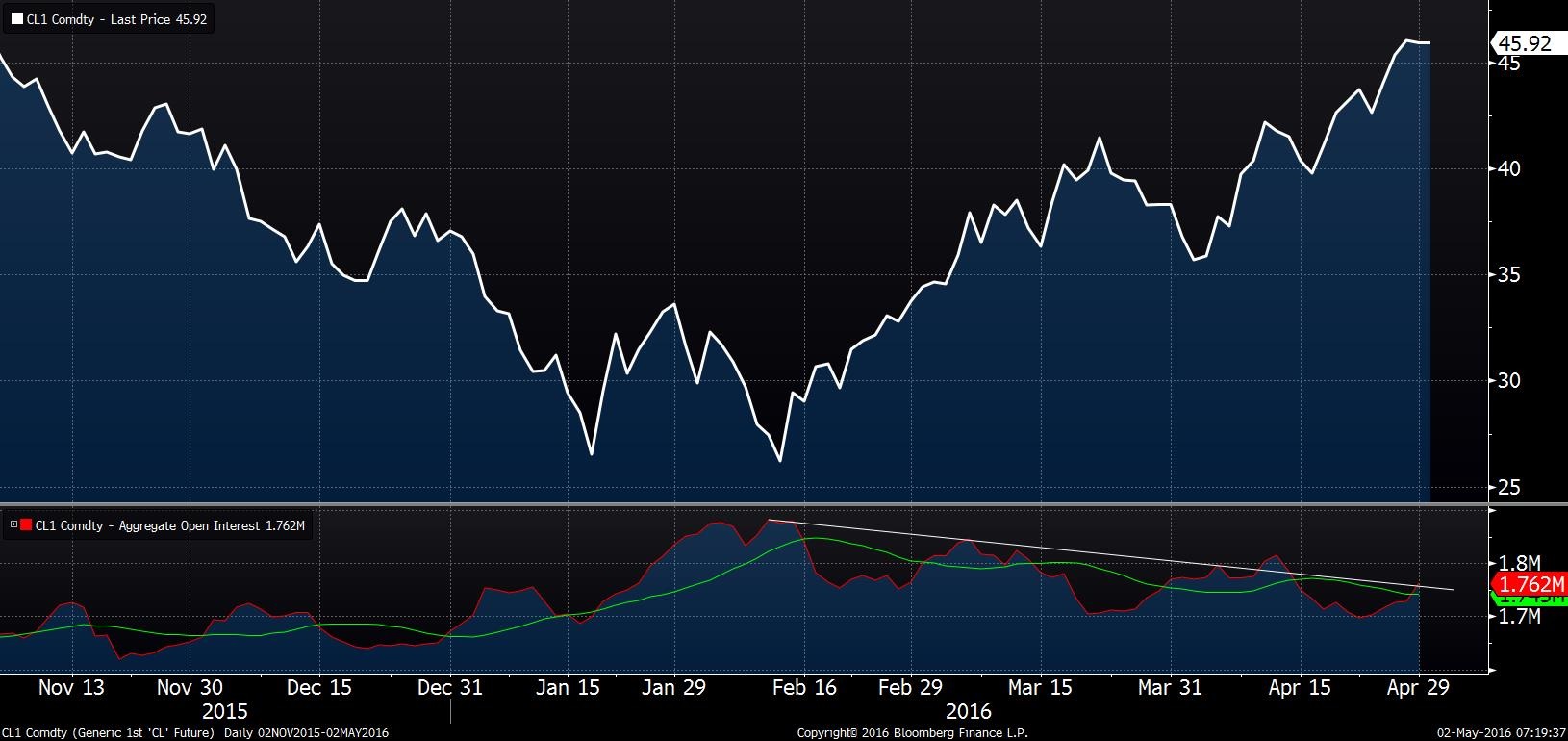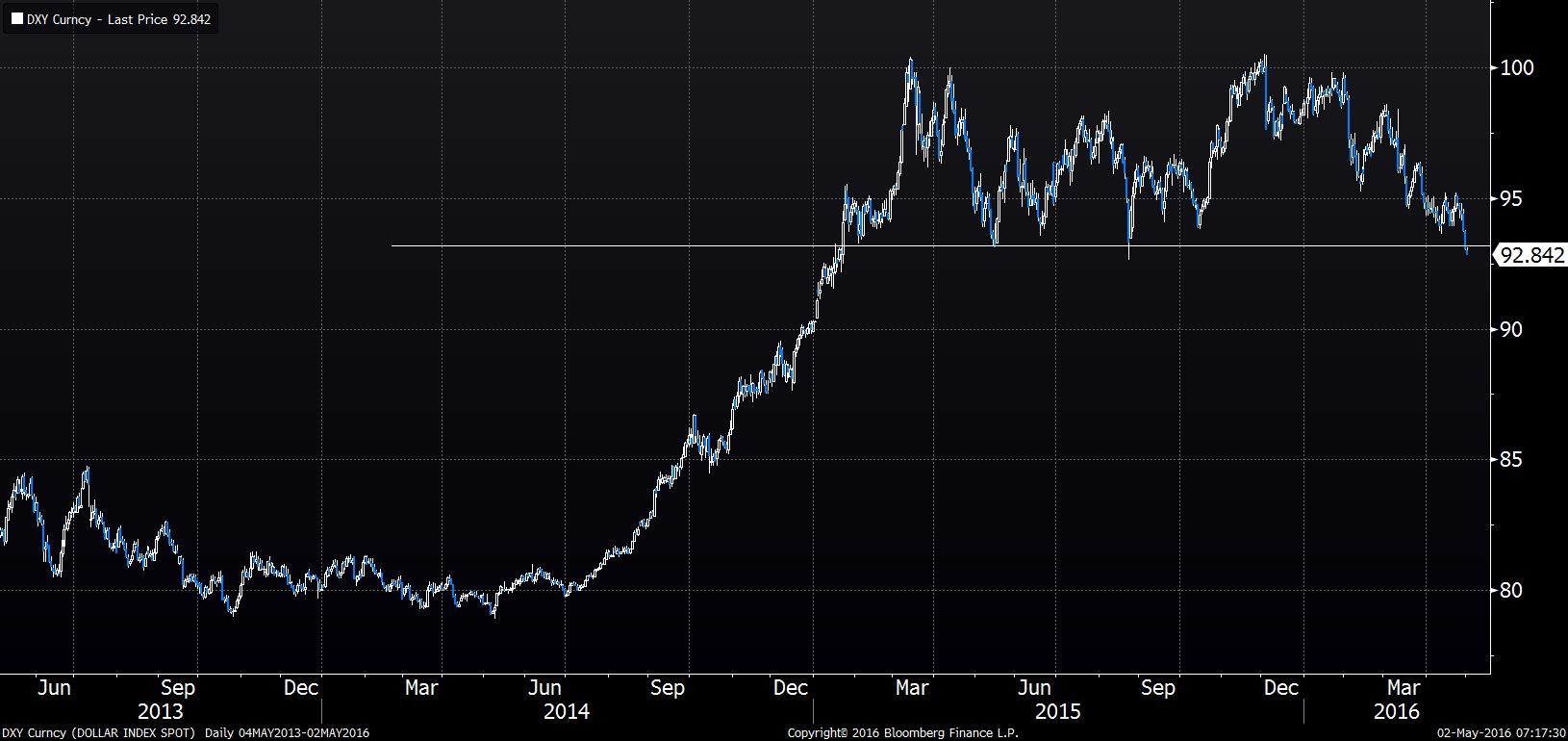Daily Comment (May 2, 2016)
by Bill O’Grady and Kaisa Stucke
[Posted: 9:30 AM EDT] May Day is being celebrated in much of the world today. This holiday is “Labor Day” for most of the rest of the world. Most notably, British markets are closed today.
The global PMI data is out (see below). The numbers today are the official ones that follow the “flash” estimates that came out a couple weeks earlier. In general, they show that most of the developed world is holding above the 50 expansion line. In China, we note that new orders are rising, suggesting that the borrowing binge undertaken in Q1 has worked to boost the economy. However, Chinese officials are already talking about scaling back the lending on fears that China is creating a new bubble. For example, today’s NYT is reporting that Dalian egg futures are up nearly 33% this year, despite no evidence of supply problems or rising demand. Instead, as bank lending has increased, speculators appear to be using the funds to make bets across numerous markets. Another quip we saw over the weekend was that Dalian iron ore futures are “the new casino.” The problem in China is that as the PBOC spurs money creation, there are not a lot of places for the liquidity to go. Overseas investment faces growing restrictions, and property prices are already elevated and evidence of overbuilding is widespread. Thus, there are reports that the PBOC is looking to rein in money growth, which will likely lead to retracement in various commodity markets.
Oil prices are roughly flat this morning but have been very strong recently. It appears that this rally has mostly been fueled by short covering.
The lower panel of the chart tells the story. It measures cumulative open interest, the number of accounts that remain open. A futures market is evenly divided by longs and shorts (because the futures market is, at heart, a “zero sum” market). Note that open interest peaked when oil prices made their lows in mid-February. Since then, we have seen a steady decline in open interest accompanied by a strong rise in prices. Anytime there is a divergence between the trend in prices and open interest, it suggests covering activity. In other words, a rising market with falling open interest indicates short covering; a falling price market with falling open interest suggests long liquidation. On the other hand, rising open interest with rising prices suggests new long positions are being added, and falling prices with rising open interest indicates increased shorting activity.
The key short-term questions for oil are when will the short covering end and how will the market do once this buying stops? We suspect the short covering began, in part, on the belief that prices probably weren’t going much lower and that inventory accumulation would have ended by now. However, as we noted last week, current prices have already built in almost all the seasonal decline in inventories, meaning that further strength is probably dependent on dollar weakness.
On that front, the dollar is continuing to depreciate.
The dollar broke through support established in Q4 2014. Technically, a trip to around 89 wouldn’t be out of the question (which would be a EUR of around $1.20). With a September seasonal inventory trough of around 500 mb of crude and a $1.200 reading on the EUR, WTI’s fair value would be around $56 per barrel. Thus, this dollar drop is important.
Finally, the FT is reporting that Russian President Putin is shuffling his security officials, firing eight high-ranking members and adding 12 new ones. He has also brought Alexei Kudrin back into his government with the position of Deputy Head of the Economic Council. Kudrin is an orthodox government finance official who has opposed the security official’s takeover of the government. We note that this news comes a couple weeks after Putin created his personal guard. The creation of his guard along with bringing Kudrin back to government might mean that Putin is about to engage in some sort of shock therapy for the economy; Kudrin would likely support austerity to deal with the drop in oil and the personal guard might be there to protect Putin from public opposition to austerity.




